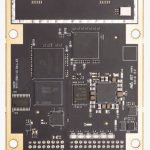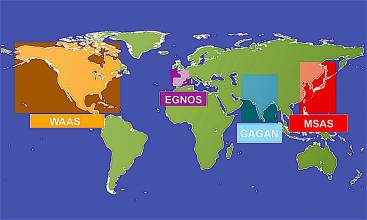Looking over the initial budget of the Trump administration, we can safely say that the president and his timorous collaborators on Capitol Hill have a maximalist concept of providing for “the common defense” and a minimalist one for promoting “the general welfare,” two of the six missions enshrined in the preamble of the U.S. Constitution.
Looking over the initial budget of the Trump administration, we can safely say that the president and his timorous collaborators on Capitol Hill have a maximalist concept of providing for “the common defense” and a minimalist one for promoting “the general welfare,” two of the six missions enshrined in the preamble of the U.S. Constitution.
At first glance, that might suggest that the prospects for GPS are better than ever. After all, as operator of the Global Positioning System, the Air Force appears likely to benefit from the president’s proposed addition of $52 billion in defense spending for fiscal year 2018.
Certainly that budgetary largesse must be able to accommodate the relatively modest increments needed to accelerate the fielding of M-code–capable GPS receivers and get the next-generation satellite and control segment programs back on track.
One of the few widely praised appointments that Trump has made was naming Jim Mattis to head the DoD. The result of a timely recommendation by former Defense Secretary Robert Gates, the appointment assured a self-possessed, battle-tested, and disciplined leader for the department.
Confirming the nomination of Boeing executive Patrick Shanahan to serve as Mattis’s deputy would add another leader familiar with the industry culture and departmental mission of the nation’s defense community. Among the DoD deputy secretary’s responsibilities is co-chairing the National Space-Based Positioning, Navigation, and Timing Executive Committee (PNT ExCom), the high-level interagency group that oversees GPS policy management.
Nonetheless, the president’s proposed financial enhancement of an agency already consuming about half of the federal government’s discretionary spending seems not merely excessive but counterproductive, given the offsetting reductions proposed for civil agencies.
With defense spending now more than $600 billion, recent expressions of concern over U.S. military readiness may stem more from management failings and misallocation of resources than inadequate budgetary support.
Yes, it’s an increasingly hard-power world, but successfully addressing global problems necessarily requires soft as well as hard tools. Echoing Peggy Lee, we might ask of defense spending, “is that all there is” to ensuring national security?
We have yet to learn where, for example, the White House’s proposed 29 percent cut in the State Department’s budget might fall.
Let us hope that it spares the Office of Space and Advanced Technology. That small entity leads interagency coordination on civil space-related international agreements with other nations’ space agencies. And it plays a key role in the implementation of the U.S. National Space Policy focused on dual-use space applications including GNSS.
The space and advanced technology office provides the staff and expertise for U.S. participation in the UN-affiliated International Committee on GNSS (ICG). Over the 12 years of its existence, the ICG has gathered up all the national players involved with GNSS in a cooperative venture. Its ongoing efforts not only help prevent adverse effects of one GNSS on another, but have also encouraged interoperability among these systems, collaborative projects, and common efforts to head off external threats to GNSS in general.
Meanwhile, the GNSS community should remain vigilant against the possibility that a proposed 13 percent reduction in the Department of Transportation (DoT) will reach the Office of Positioning, Navigation and Timing & Spectrum Management. Through such activities as the Adjacent Band Compatibility Assessment, this DoT group has helped defend GPS against domestic threats such as those posed by the LightSquared initiative to use nearby RF spectrum for high-powered wireless wideband service.
The current administration’s posture in the world often seems not so much an “America first” policy as an “America only” vision. And while the collateral damage from liberal economic globalization over the last four decades certainly demands review of our industrial, tax, and trade policies, it does not mean that the United States can ignore the fact that our nation is embedded in an international matrix inescapably held together by technology, transportation, demographic shifts, and cultures as well as commerce.





